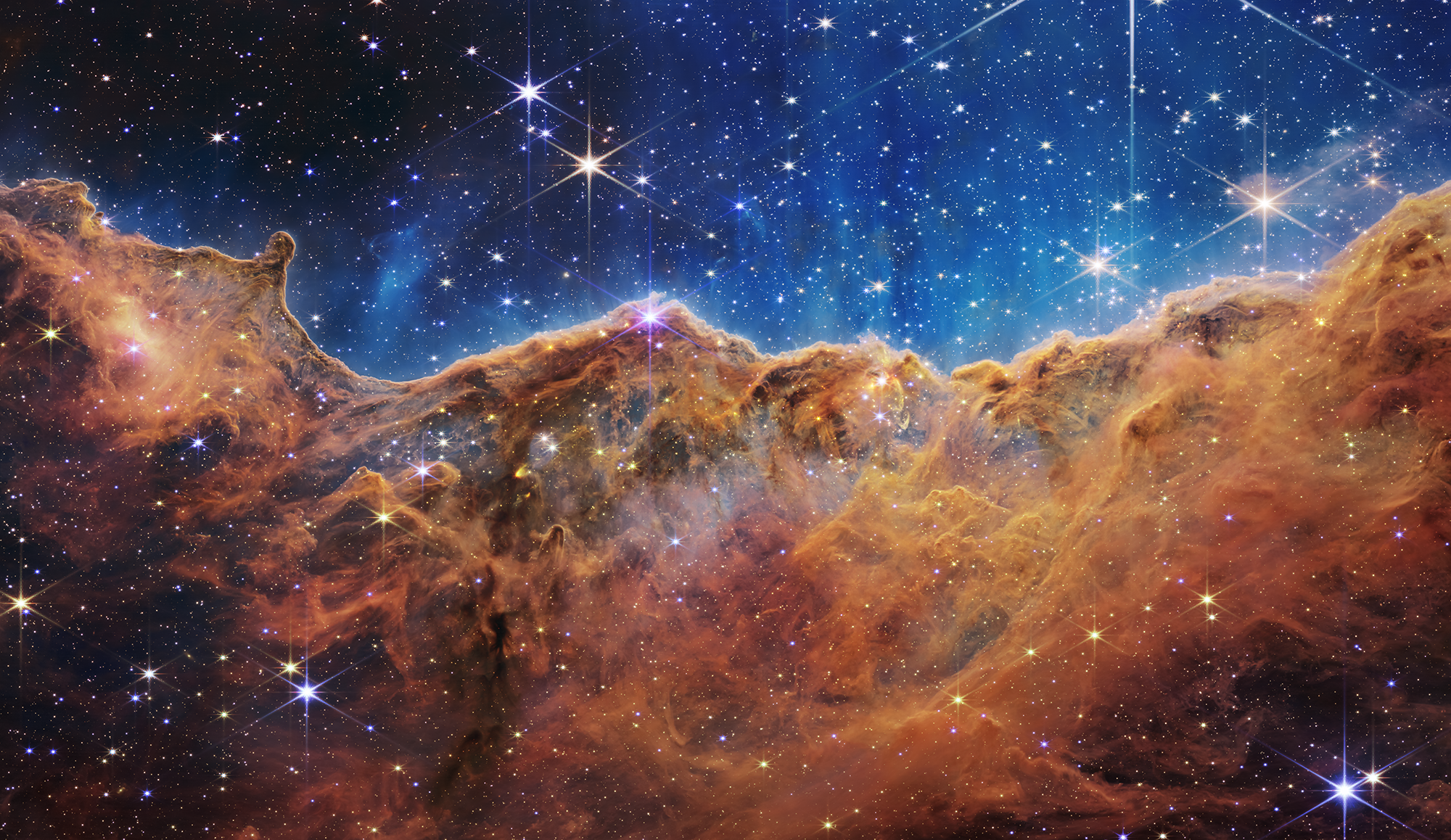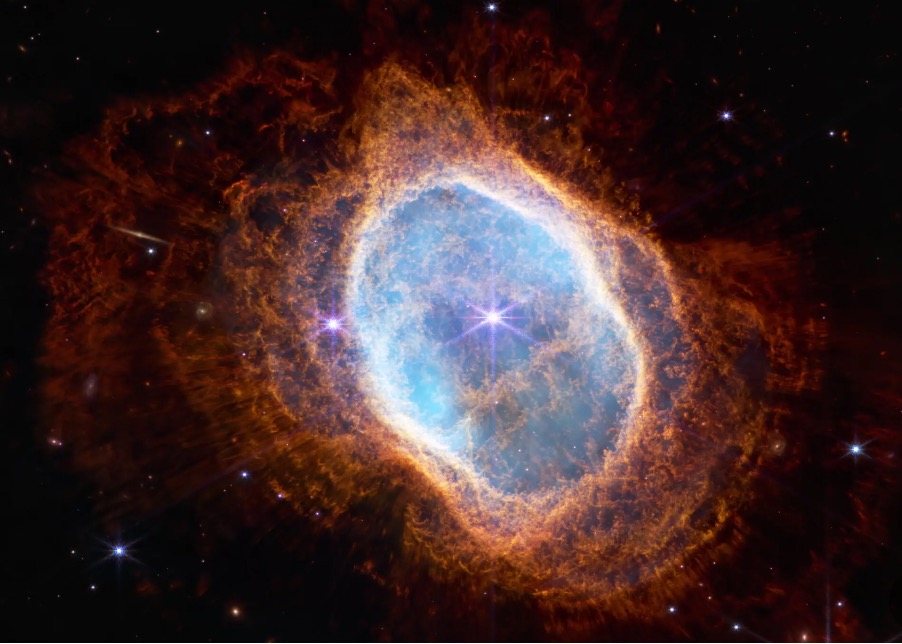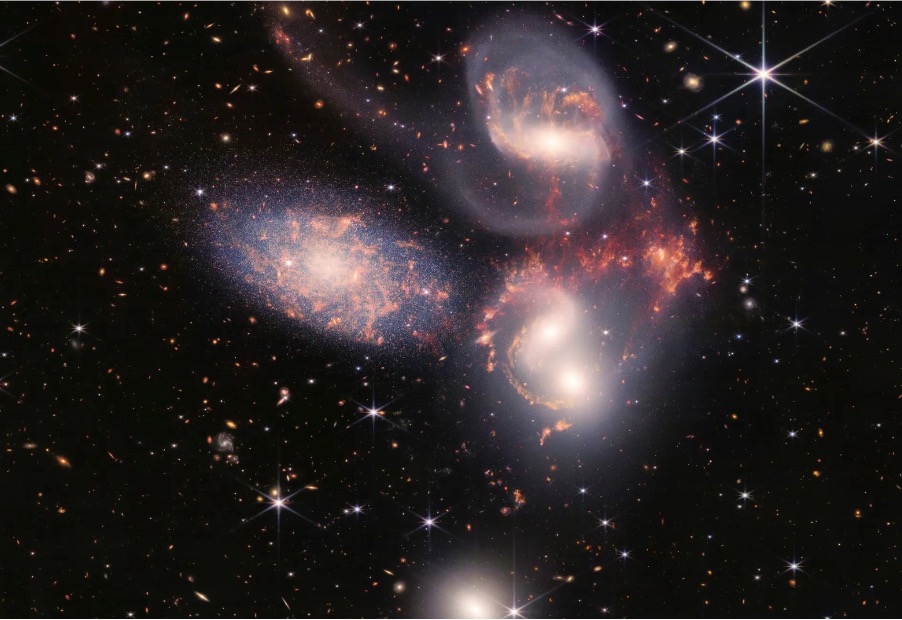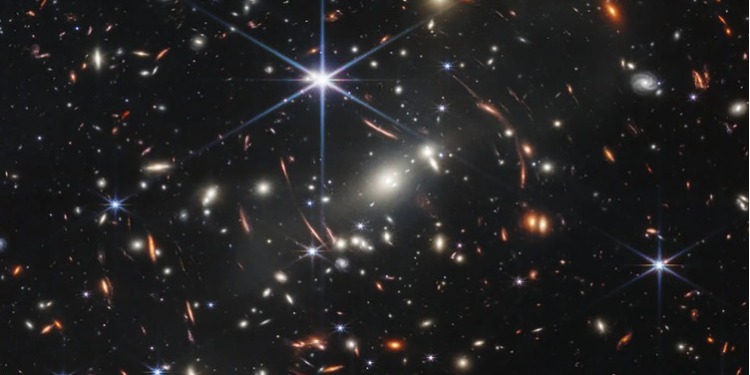In an event at the White House on Monday evening, US President Joe Biden unveiled NASA’s James Webb space telescope’s first full-colour image of a distant galaxy cluster, hailed by astronomers as the most detailed view of the early universe ever seen.
Further photos and spectrographic data will be showcased today, Tuesday, July 12, at the Goddard Space Flight Centre in Maryland.
The first image from NASA’s Webb telescope has revealed the “deepest and sharpest” image of the early universe ever taken ⤵️
🔗: https://t.co/XRjA0yNoR2 pic.twitter.com/rGbZZWFfgR
— Al Jazeera English (@AJEnglish) July 12, 2022
The James Webb telescope, constructed by the Northrop Grumman Corp as part of the $10 billion joint project between NASA and the European and Canadian space agencies (ESA & CSA), is the largest and most powerful space science telescope ever made.
It is designed to see through the cosmos to the early universe and make revolutionary astronomical discoveries.
As such, it was launched on its journey one million miles into the cosmos from French Guiana on Christmas Day 2021. Six months of remotely unfurling its various components followed, leading to the much-anticipated release of its imagery this week.
The Webb Telescope: Best space science observatory since the Hubble
Hubble’s images allowed scientists to understand how planets, stars, and galaxies were formed, even finding a more accurate date of birth for the Universe: 13.8 billion years ago.
While Hubble remains in operation, Webb’s new technological advancements can further deepen the world’s knowledge of the universe, as it is around 100 times more sensitive than Hubble. This is due to its primary mirror (an array of 18 hexagonal segments of gold-coated beryllium metal), which allows it to collect enough light to observe objects at greater distances, so further back in time, and its infrared thermal cameras that capture parts of the electromagnetic spectrum invisible to the eye.

Webb can thus find out more about the Universe’s origins, and the formation of stars, planets, and galaxies.
The first full-colour image from NASA’s James Webb Space telescope shows the galaxy cluster SMACS 0723, known as Webb’s first deep field, made from composite images at different infrared wavelengths.
The image shows a distant patch of the cosmos as it appeared 4.6 billion years ago, where fledgling galaxies were burning their way into visibility 600 million years after the big bang. According to NASA, it is the “most detailed view of the early universe to date,” and the deepest, sharpest portrayal of the distant cosmos ever.
Alongside SMACS 0723 (cover photo), NASA also gathered full colour scientific images and spectra from four other introductory targets which will mark the official beginning of the observatory’s general science operation. These were unveiled on July 12 at 16:30 Central European Time and include:
- The Carina Nebula: One of the largest and brightest nebulae that is visible in the night sky, located 7,600 light-years away in the Carina constellation, home to many stars several times larger than the Sun.
- WASP-96 b: A giant planet outside Earth’s solar system that NASA says is composed mainly of gas. The planet is almost 1,150 light-years away and half the mass of Jupiter.
- The Southern Ring Nebula: A planetary nebula (an expanding cloud of gas that surrounds a dying star) located about 2,000 light-years from Earth.

Photo Credit: NASA, ESA, CSA, and STScI
- Stephan’s Quintet: the first compact galaxy group ever discovered in 1877, located in the constellation Pegasus 290 million light-years away.

Scientific significance
Without some context, it can be difficult to understand how monumental this achievement really is.
Amateur astrophotographer Ethan Gone puts the photo in a more easily digestible perspective in the video below, which truly showcases the distance that Webb can image, a huge number of stars and galaxies in what NASA administrator Bill Nelson describes as “the size of a grain of sand held at arm’s length.”
Nelson also highlighted that one of the fainter specs of light appearing in the “background” of the photo dates back more than 13 billion years, conveying the vastness of space and how much more there is to understand with Webb’s help. As he said:
“We are going to be able to answer questions that we don’t even know what the questions are yet […] If you think about that, this is farther than humanity has ever looked before.”
Political significance
For Biden, Monday’s reveal at the White House’s South Auditorium was a chance to engage pride amongst Americans. This coincides with Biden’s low approval ratings following the cost-of-living crisis, and scrutiny of his ability to fight for gun control and abortion rights.
Joined by Vice President Kamala Harris, who chairs the US National Space Council, Director of the White House Office of Science and Technology Alondra Nelson, NASA Administrator Bill Nelson, and Webb telescope operations project scientist Jane Rigby, Biden celebrated “a new window into the history of our universe”.
His statement below was somewhat reminiscent of the age old affair of countries vying for prowess over space progress they’ve made:
“These images are going to remind the world that America can do big things, and remind the American people, especially our children, that there’s nothing beyond our capacity. We can see possibilities no one has seen before; we can go places no one has ever gone before […] America’s defined by one single word. Possibilities.”
Democrat Representative Alexandra Ocasio-Cortez echoed this sentiment, tweeting that the Webb’s images are a breakthrough moment and thanking NASA and every scientist, engineer and person “supporting this contribution to human history and understanding.”
Wow. A truly incredible breakthrough moment.
Thank you @NASA and to every scientist, engineer, and person supporting this contribution to human history and understanding. https://t.co/nXrbH704Z1
— Alexandria Ocasio-Cortez (@AOC) July 11, 2022
So what’s next for the remarkable Webb telescope?
Scientists will now embark on a competitively selected list of missions exploring the evolution of galaxies, the life cycles of stars, the atmospheres of exoplanets and the moons of our outer solar system, aiming to solve mysteries in the solar system, look beyond to distant worlds around other stars, and probe the unknown structures and origins of our universe.
Questions of the huge sums spent on these space projects will undoubtedly surface vis a vis the many urgent problems occurring on earth itself right now, as will arguments that these are early investments into a space economy set to be worth trillions within the next 20 years.
Editor’s Note: The opinions expressed here by the authors are their own, not those of Impakter.com — In the Featured Photo: Galaxy Cluster SMACS 0723. Featured Photo Credit: NASA, ESA, CSA, and STScI.










